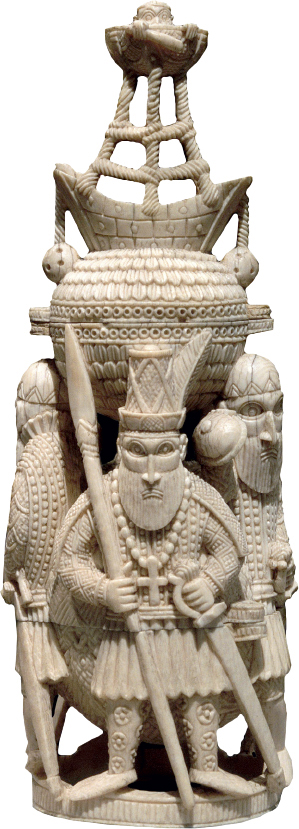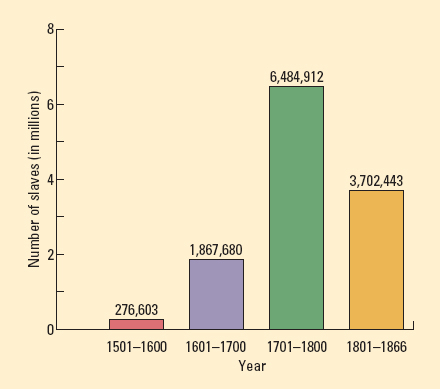Understanding World Societies:
Printed Page 603
Impact on African Societies

Contact with the Sapi people of present-
What economic impact did European trade have on African societies? Africans possessed technology well suited to their environment. Over the centuries they had cultivated a wide variety of plant foods; developed plant and animal husbandry techniques; and mined, smelted, and otherwise worked a great variety of metals. Apart from a handful of items, most notably firearms, European goods presented no novelty to Africans. Africans exchanged slaves, ivory, gold, pepper, and animal skins for those goods. African states eager to expand or to control commerce bought European firearms, although the difficulty of maintaining guns often gave gun owners only marginal superiority over skilled bowmen.11
The African merchants who controlled the production of exports gained the most from foreign trade. Slave-
As in the Islamic world, women in sub-
The intermarriage of French traders and Wolof women in Senegambia created a métis, or mulatto, class. In the emerging urban centers at Saint-
The political consequences of the slave trade varied from place to place. The trade enhanced the power and wealth of some kings and warlords in the short run but promoted conditions of instability and collapse over the long run. In the Kongo kingdom the perpetual Portuguese search for Africans to enslave undermined the monarchy, destroyed political unity, and led to constant disorder and warfare; power passed to the village chiefs. Likewise in Angola, the slave trade decimated and scattered the population and destroyed the local economy. By contrast, the military kingdom of Dahomey, which entered into the slave trade in the eighteenth century and made it a royal monopoly, prospered enormously. Dahomey’s economic strength rested on the slave trade. The royal army raided deep into the interior, and in the late eighteenth century Dahomey became one of the major West African sources of slaves. When slaving expeditions failed to yield sizable catches and when European demand declined, the resulting depression in the Dahomean economy caused serious political unrest. Iboland, inland from the Niger Delta, from whose great port cities of Bonny and Brass the British drained tens of thousands of enslaved Africans, experienced minimal political effects. A high birthrate kept pace with the incursions of the slave trade, and Ibo societies remained demographically and economically strong.

The volume of slaves involved in the transatlantic slave trade peaked during the eighteenth century. These numbers show the slaves who embarked from Africa and do not reflect the 10 to 15 percent of enslaved Africans who died in transit. (Source: Data from Emory University. “Assessing the Slave Trade: Estimates,” in Voyages: The Trans-
What demographic impact did the slave trade have on Africa? Between approximately 1501 and 1866 more than 12 million Africans were forcibly exported to the Americas, 6 million were traded to Asia, and 8 million were retained as slaves within Africa. Figure 20.2 shows the estimated number of slaves shipped to the Americas in the transatlantic slave trade. Export figures do not include the approximately 10 to 15 percent who died during procurement or in transit.
The early modern slave trade involved a worldwide network of relationships among markets in the Middle East, Africa, Asia, Europe, and the Americas. But Africa was the crucible of the trade. There is no small irony in the fact that Africa, which of all the continents was most desperately in need of population because of its near total dependence on labor-
Markets in the Americas generally wanted young male slaves. Asian and African markets preferred young females. Women were sought for their reproductive value, as sex objects, and because their economic productivity was not threatened by the possibility of physical rebellion, as might be the case with young men. Consequently, two-
>QUICK REVIEW
How did the transatlantic slave trade shape African demographic trends?